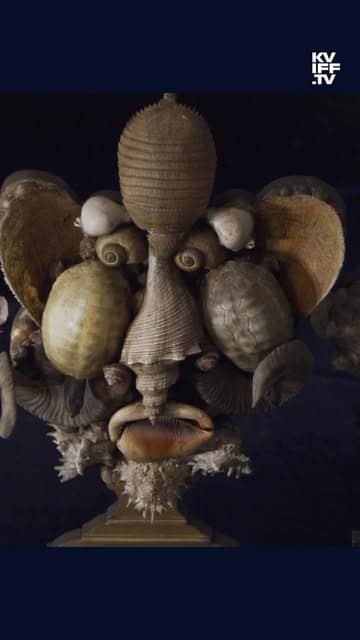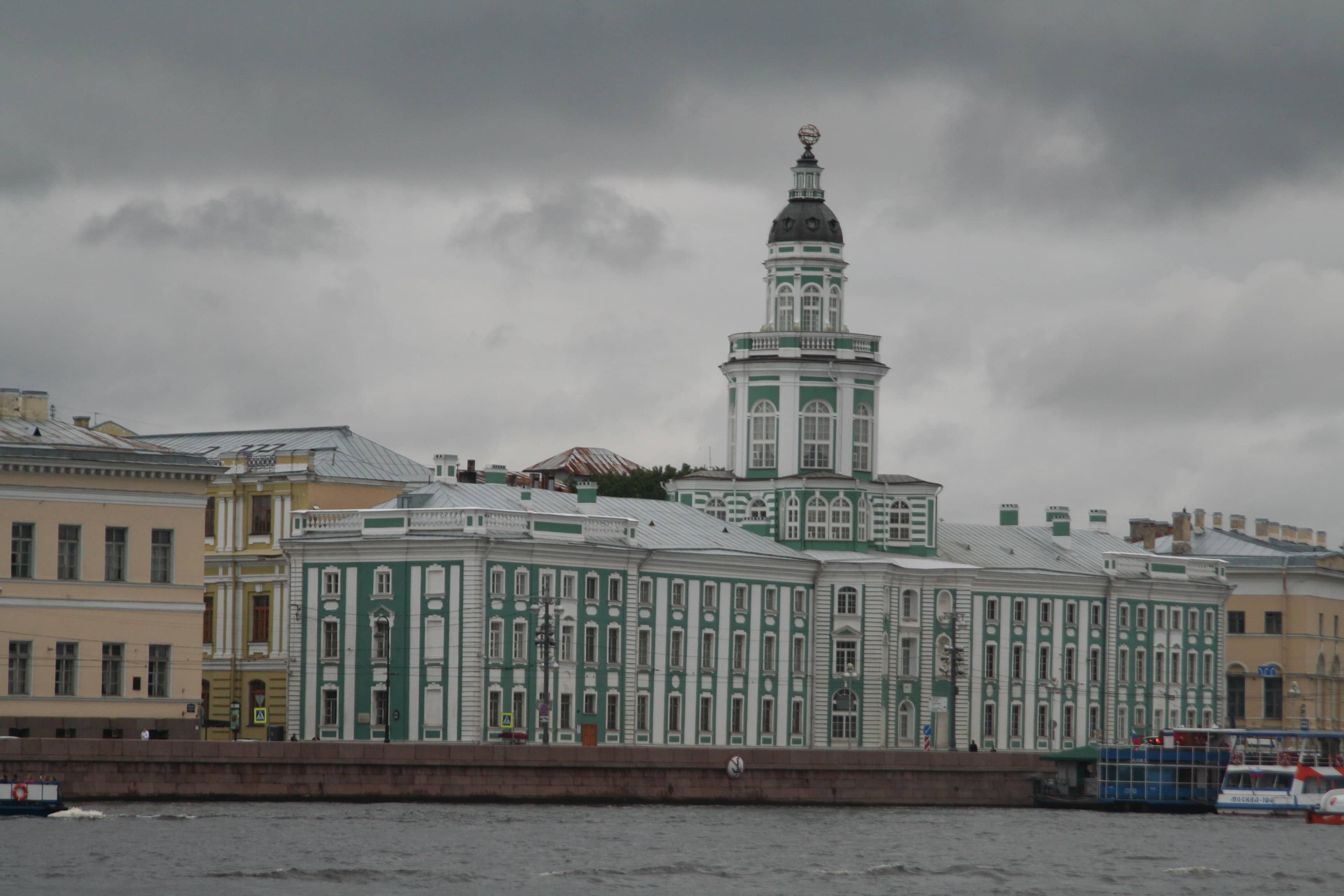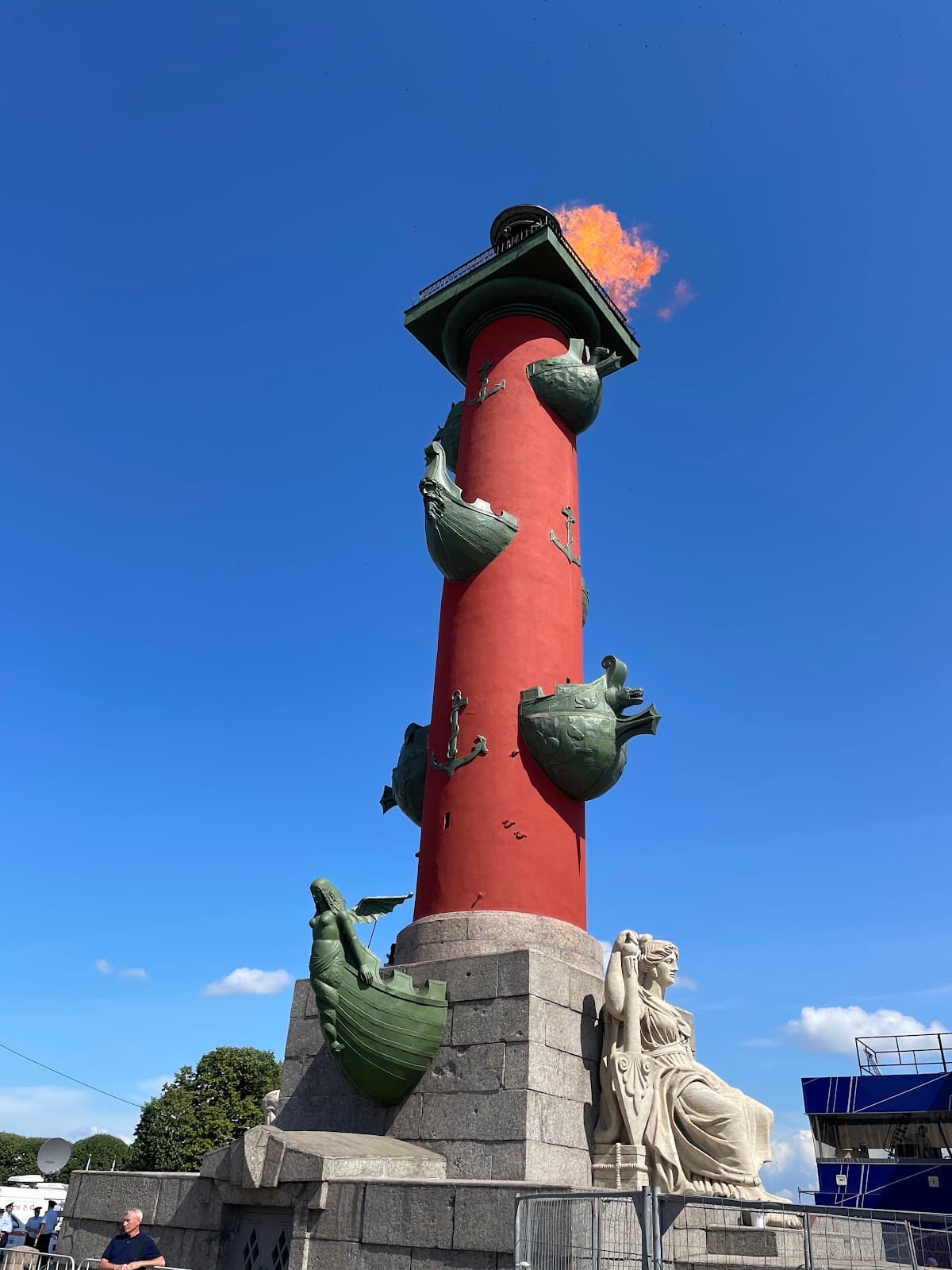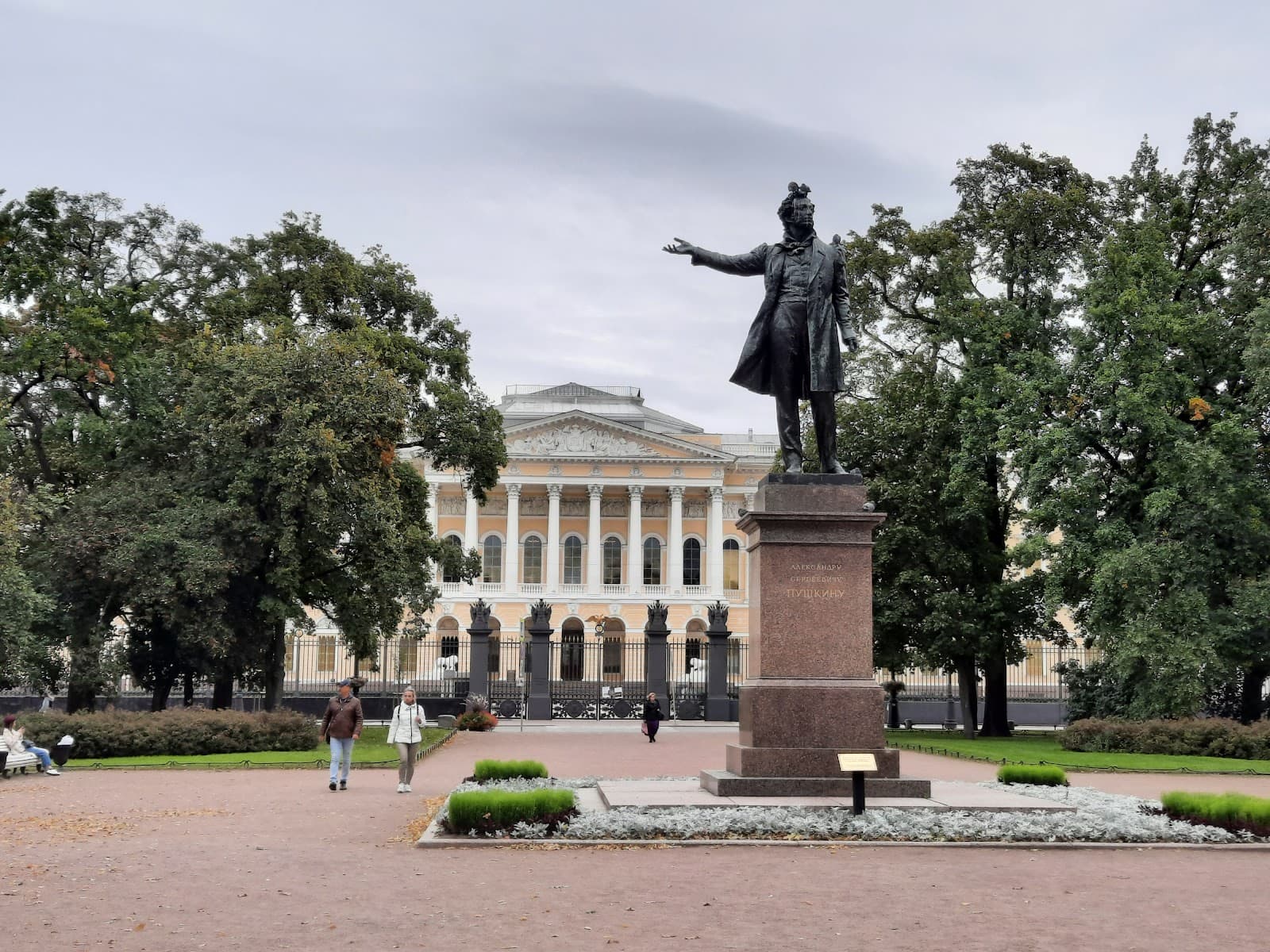
Kunstkamera
Russia's first museum, founded by Peter the Great, showcasing global ethnography and unique anatomical curiosities.

Highlights
Must-see attractions

Social
From TikTok & Reddit
Best Time
Fewer crowds, more peaceful exploration.

Kunstkamera
Best Time
Fewer crowds, more peaceful exploration.

Highlights
Must-see attractions
Russia's first museum, founded by Peter the Great, showcasing global ethnography and unique anatomical curiosities.
"One of the most interesting museums with unique collections in the world!"

📸 Photography Rules
Photography may be restricted in certain areas, especially the anatomical collection. Always check signage.
🎟️ Buy Tickets Online
Skip the lines! Purchasing tickets in advance online is highly recommended to save time.

Highlights
Discover the most iconic attractions and experiences

Cabinet of Curiosities
Anatomical and Pathological Collection
A collection of preserved human and animal anomalies, offering a unique and often startling glimpse into nature's variations.

Ethnographic Collections
Various Halls
Explore diverse artifacts from cultures worldwide, including Eskimo, Native American, African, and Asian exhibits.

Peter the Great's Personal Collection
Founding Collection Halls
Discover the original items collected by Tsar Peter the Great, forming the museum's historical foundation.
Plans like a pro.
Thinks like you
Planning Your Visit
Prepare for the Unusual
Book Tickets in Advance
Best Times
Insider Tips
from TikTok, Instagram & Reddit
📸 Photography Rules
Photography may be restricted in certain areas, especially the anatomical collection. Always check signage.
🎟️ Buy Tickets Online
Skip the lines! Purchasing tickets in advance online is highly recommended to save time.
📚 English Information
Most exhibits have English text, making it accessible for international visitors.
🚶♀️ Wear Comfortable Shoes
You'll be doing a lot of walking to explore the vast collections. :athletic_shoe:
Tips
from all over the internet
📸 Photography Rules
Photography may be restricted in certain areas, especially the anatomical collection. Always check signage.
🎟️ Buy Tickets Online
Skip the lines! Purchasing tickets in advance online is highly recommended to save time.
📚 English Information
Most exhibits have English text, making it accessible for international visitors.
🚶♀️ Wear Comfortable Shoes
You'll be doing a lot of walking to explore the vast collections. :athletic_shoe:
😳 Brace Yourself!
The anatomical collection can be confronting. Be prepared for unusual sights.
What Travellers Say
Reviews Summary
Kunstkamera is lauded as one of St. Petersburg's most unique and interesting museums, praised for its vast ethnographic collections and educational value. While the anatomical exhibits are described as 'breathtaking and spooky,' they are a significant draw. Some visitors find the sheer volume of information overwhelming, but most agree it's a highly recommended and worthwhile experience.
"Very nice museum with everything you need in English."
fifofuko
"One of the most interesting museums with unique collections in the world! Located in a super old but well-kept building. We were impressed by the Eskimo exhibition created from the things brought from Russian expeditions, you don’t see that in classic history museums, and, of course, the collection of human embryons was breathtaking and spooky at the same time, our stomachs turned up in the beginning but then we were curiously examining just like other visitors."
Diana Abroskina
""Come, look, appraise and believe your own eyes only" is the motto of this museum. A fascinating collection of cultural, religious, hunting, social and dress from regions around the world. Its was like a world tour from the Eskimos, past the Indian tribes of north America into Africa and across Indochina and southeast Asia. There is also the exhibition of "oddities" and other unusual, deformed embryos and animals. The museum is very educational but even if taken slowly, it's an information overload."
Vincent Oliver
What People Like
What People Dislike
Frequently Asked Questions
🚇 🗺️ Getting There
Kunstkamera is conveniently located on the Spit of Vasilyevsky Island in St. Petersburg. You can reach it by public transport, including buses and trolleybuses, that stop nearby. Many visitors also enjoy walking along the Neva River to reach the museum.
The closest metro stations are Admiralteyskaya and Gostiny Dvor, but it's still a significant walk from either. Taking a bus or taxi directly to the museum is often more convenient.
Driving and parking in central St. Petersburg can be challenging. Public transport or ride-sharing services are generally recommended for easier access to the museum.
Approaching from the Neva River embankment offers beautiful views of the museum's distinctive architecture.
While not always explicitly advertised, guided tours might be available. For a self-guided experience, consider the 'Digital Kunstkamera' project for a virtual exploration.
🎫 🎫 Tickets & Entry
Ticket prices can vary, but it's generally affordable. Purchasing tickets online in advance is strongly advised to avoid long queues.
Opening hours can change seasonally. It's best to check the official Kunstkamera website for the most up-to-date information before your visit.
Yes, you can buy tickets at the museum, but expect potentially long queues, especially during peak tourist seasons. Online booking is the preferred method.
Information on discounts is usually available on the museum's official website. It's worth checking for any concessions you might be eligible for.
Visiting on weekday mornings, shortly after opening, is generally the best strategy to avoid the largest crowds.
🎫 🧭 Onsite Experience
The 'Cabinet of Curiosities,' featuring anatomical and pathological specimens, is perhaps the most notorious and talked-about section.
Kunstkamera houses vast ethnographic collections from around the world, alongside its famous anatomical and anthropological displays.
Photography rules can be strict, especially in the anatomical collection. Always look for signs and respect the museum's policy.
To fully appreciate the extensive collections, allocate at least 2-3 hours. Some visitors find it an 'information overload' if rushed.
While educational, the anatomical exhibits can be disturbing for younger children. Parents should consider this carefully.
📸 📸 Photography
Photography policies can vary by exhibit. While general areas might allow photos, the 'Cabinet of Curiosities' often has restrictions. It's crucial to check for signage.
Yes, flash photography is usually prohibited, and in sensitive areas like the anatomical collection, photography might be entirely forbidden to respect the exhibits and visitors.
The exterior architecture, especially the distinctive tower, offers great photo opportunities. Inside, the ethnographic halls provide rich visual content.
Typically, there isn't a separate fee for photography in areas where it's permitted, but always confirm with museum staff or signage.
A camera with good low-light capabilities is beneficial for indoor shots. However, prioritize respecting the museum's rules over capturing every moment.
For Different Travelers
Tailored advice for your travel style
👨👩👧 Families with Kids
Many exhibits have English descriptions, making it more accessible for families. The sheer scale of the museum means you can tailor your visit to your children's interests and tolerance levels. It's a place that can spark curiosity about the world, but parental discretion is advised for the more confronting displays.
🧐 Curious Minds & History Buffs
The ethnographic collections provide a deep dive into global cultures, offering a rich understanding of human diversity. The anatomical section, while potentially shocking, is a crucial part of understanding the history of scientific inquiry and the study of the human body. The 'Digital Kunstkamera' project also offers a modern, accessible way to engage with the museum's historical context.
🎨 Art & Architecture Enthusiasts
Deep Dives
In-depth insights and expert knowledge
The Legacy of Peter the Great
The museum's early collections were a mix of scientific specimens, ethnographic artifacts, and indeed, anatomical oddities. Peter the Great himself was fascinated by the unusual and the rare, actively seeking out and acquiring items that would spark curiosity and learning. This eclectic approach laid the foundation for the museum's unique character, blending scientific inquiry with a sense of wonder and the sometimes macabre.
Today, Kunstkamera continues to be a vital institution, preserving and exhibiting its immense collection of over two million items. It remains a testament to Peter the Great's ambitious vision for Russia's scientific and cultural development, offering visitors a journey through history, diverse cultures, and the complexities of the natural world.
Navigating the 'Cabinet of Curiosities'
Visitors often describe this area as both 'breathtaking and spooky,' with reactions ranging from fascination to revulsion. It's important to approach this part of the museum with an open mind, understanding its historical context as a scientific endeavor rather than a display of the grotesque for its own sake. Many find that after the initial shock, a sense of curiosity takes over as they examine the unique specimens.
Due to the sensitive nature of these exhibits, photography is often strictly prohibited in this section. Visitors are advised to be respectful of the displays and the experiences of others. The 'Cabinet of Curiosities' is a powerful reminder of the diversity of life and the ongoing quest for scientific understanding.
Exploring Global Ethnography
The museum's ethnographic halls are filled with an impressive array of items, including clothing, tools, religious objects, and ceremonial artifacts. These collections were largely assembled through Russian expeditions, providing a unique perspective on global diversity. The sheer volume and variety of these exhibits make Kunstkamera an invaluable resource for understanding the breadth of human experience and cultural heritage.
Each hall is designed to immerse visitors in the specific cultural context, offering insights into social structures, beliefs, and historical developments. The detailed descriptions, often available in English, enhance the educational value, allowing for a deeper appreciation of the artifacts and the people who created them.


Social
from TikTok, Instagram & Reddit